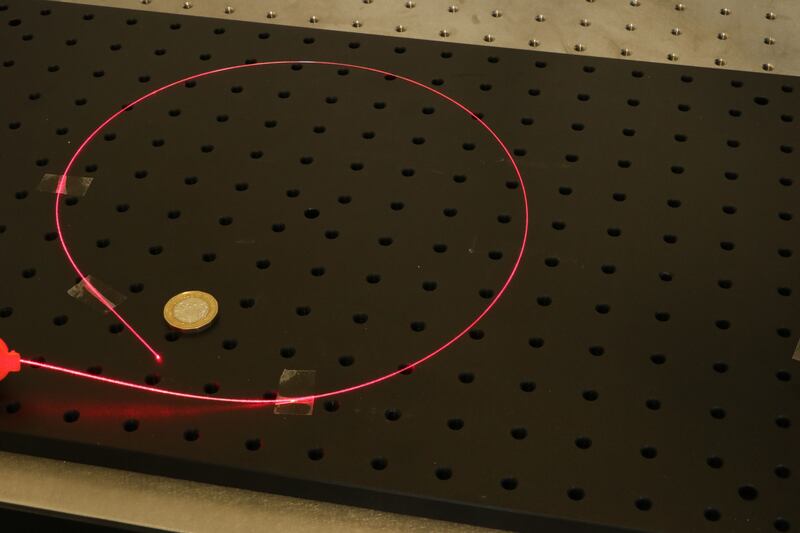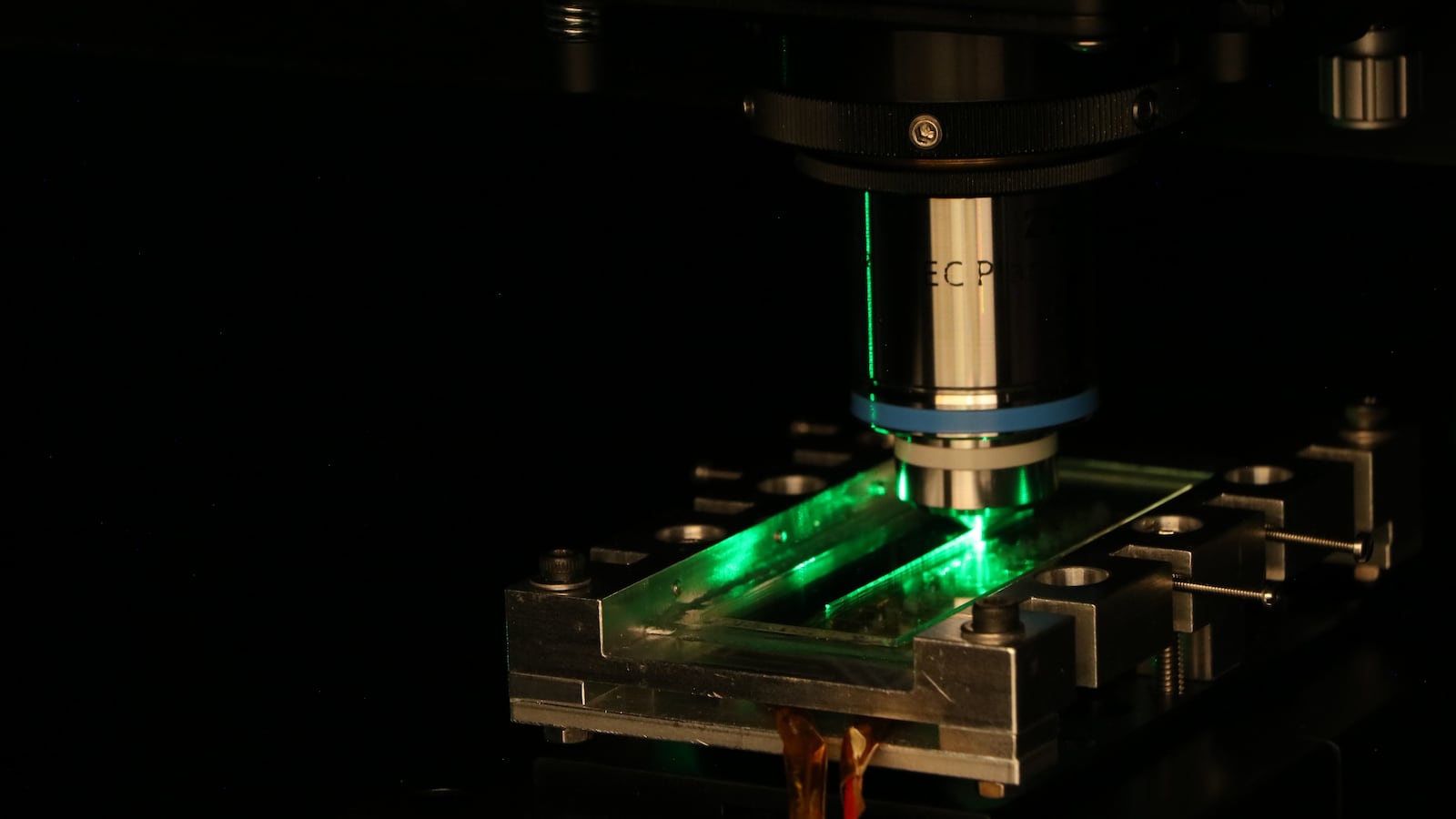From fusion reactors to your internet connection, fiber-optic cables have a wide range of applications due to how efficiently they send data when compared to traditional copper wires. The science is fairly straightforward: data-encoded light signals are sent through a fiber-optic wire roughly the diameter of a strand of hair. When bundled up, these wires become cables that can transmit large caches of information across the world.
But even with fiber optics, data can be imprecise. While the fibers are tiny, they’re massive when compared to light, which bounces around inside the cable and can convert to different wavelengths as a result. It’s not much of an issue when we’re talking about your internet connection, but it can pose a problem when those cables are used on machines like airplane sensors that gauge engine temperature and emissions output.
That’s why University of Oxford researchers developed a new type of sapphire fiber optics that focuses the light into one wavelength. In a new paper published Thursday in Optics Express, the team describes how they were able to create a minuscule channel along the sapphire fiber that’s roughly one-hundredth of a millimeter in diameter. This allowed them to focus the light into the wire into roughly a single wavelength.

The researchers transmit a light through the sapphire fiber.
Julian Fells/University of OxfordThe fiber can also withstand temperatures of more than 2,000 degrees Celsius. The team believes that the sapphire fiber has potential to be used in a variety of different industries and applications including more accurate temperature measurements for airplane jet engines. This data could help engineers better understand in-flight engine conditions, allowing pilots and on-board computers to reduce greenhouse gas emissions by changing and improving operations during flight.
“This fundamental research could in time enable more efficient and accurate multi-point temperature measurement in harsh environments, improving control, efficiency, and safety,” Mark Jefferies, chief of university research liaison at Rolls-Royce, which partnered with Oxford for the study, said in a press release.
While exciting, there is a tiny catch: The wire the team tested was just a centimeter long. However, the researchers are confident that it can be used in cables as long as several meters. They also hope that because the sapphire wire is so hardy, it can be used in other harsh environments such as machines containing radioactive material or even fusion reactors.
“These sapphire optical fibers will have many different potential applications within the extreme environments of a fusion energy power plant,” Rob Skilton, head of research at the U.K. Atomic Energy Authority (UKAEA), who also partnered with the researchers, said in the press release. “This technology has the potential to significantly increase the capabilities of future sensor and robotic maintenance systems in this sector, helping UKAEA in its mission to deliver safe, sustainable, low carbon fusion power to the grid.”
With so many potential applications, the team now hopes to build off of their research to enable broader commercial applications. This could mean that the sapphire fiber optics could be used in future fusion reactors and even spacecraft—which will come especially in handy as the world enters a new space race.







